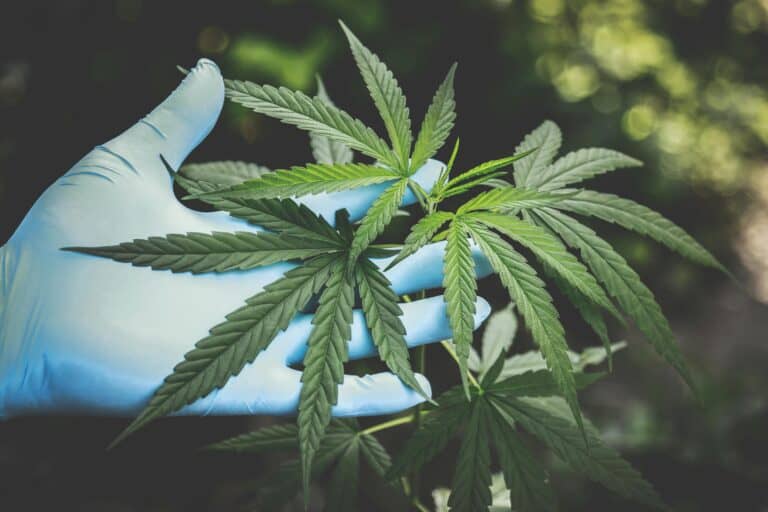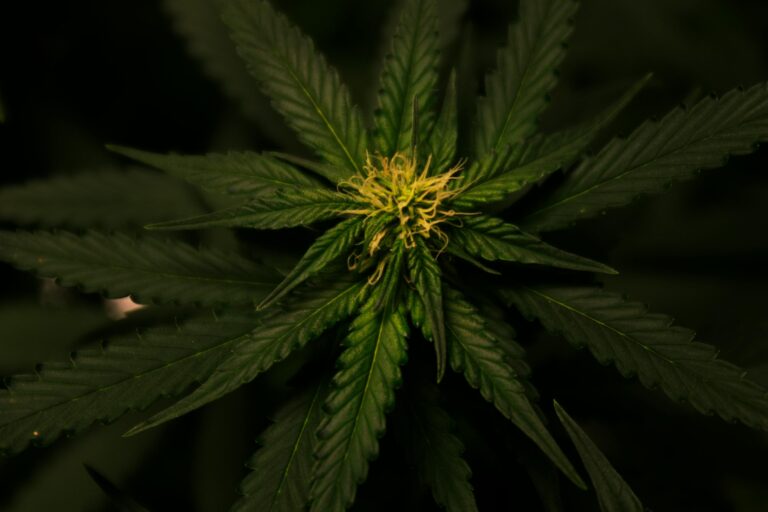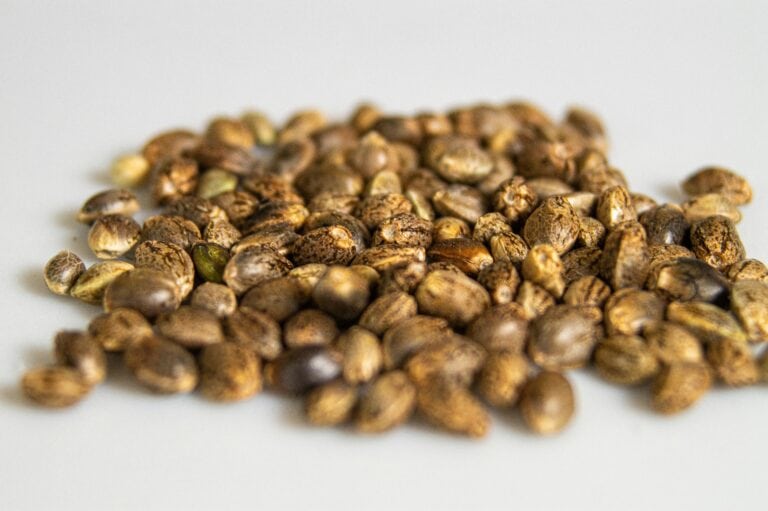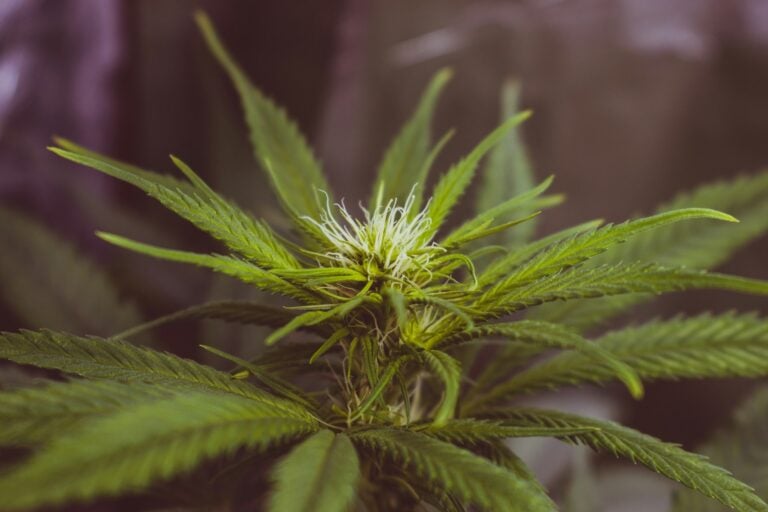How to Choose a Cannabis Strain for Your First Medical Grow
So, you’ve decided to do it. You’re going to take control of your health and your medicine by growing your own cannabis. It’s an empowering, exciting decision… right up until the first big question stops you in your tracks: how to choose a cannabis strain?
If you’re anything like me, your next step was to open a seed catalog, and that’s when the real headache started. Suddenly, you’re scrolling through hundreds of options with bizarre names that sound like racehorses or failed rock bands. Alaskan Thunderfudge. Zombie Death Fuck. Green Crack. You’re staring at walls of text about “phenotypes,” “terpene profiles,” and “flowering times,” and that initial excitement starts to curdle into a familiar feeling: pure overwhelm.
Let me be 100% upfront: as I write this in my little corner of Cleveland, I am right there with you. I haven’t bought my first seed yet. I haven’t grown a single thing. I’ve spent more nights than I’d like to admit with 15 browser tabs open, trying to figure out the difference between all these options, before just closing my laptop in defeat. I was looking for medicine, not trying to get a PhD in botany overnight.
This guide is the direct result of that frustration. It’s the product of all those hours I’ve spent wading through confusing forums, dense articles, and hyped-up product descriptions. I’ve organized everything I’ve learned into the step-by-step guide I wish I’d had from the very beginning. Together, we’re going to walk through a simple process to break through the jargon and figure out how to choose the right cannabis strain for our specific medical needs and our very first grow.
First, Let’s Clear the Air: Understanding Cannabis Strain Basics
Before we can even think about choosing a specific strain to grow, we need to make sure we’re speaking the same language. This is where I got tripped up first, getting stuck on the basic terminology. Let’s get it sorted out together.
What Exactly is a Cannabis “Strain,” Anyway?
I have to admit, I used to think the word “strain” was some highly complex, scientific term. It turns out, it’s much simpler. Realizing it just meant “a specific plant variety with a unique profile” made the whole thing feel way less intimidating.
Think of it like tomatoes. You can grow Roma tomatoes, which are great for sauces, or Beefsteak tomatoes, which are perfect for slicing onto a burger. They’re both tomatoes, but they’ve been bred over time to have different sizes, tastes, and uses.
A cannabis strain is the exact same concept. It’s a specific variety of the cannabis plant that has been bred by cannabis growers to produce certain desirable characteristics—like a specific smell, a certain look, a particular set of effects, or even a resilience to pests. Some of these are “landrace” strains, which are pure varieties that originated in a specific part of the world, but most modern cannabis strains are hybrids, meaning they are a genetic cross between two or more different strains.
The Classic Question: Indica vs. Sativa vs. Hybrid

You’ve probably heard these three words more than any others when people talk about the types of cannabis strains. For decades, this was the main way cannabis was categorized, and it’s still the first thing you’ll see in any dispensary or on any seed website.
Here’s the traditional, simple breakdown:
- Indica: The quick way to remember this one is “Indica = in-da-couch.” Indica strains are generally known for their relaxing, full-body effects. They are often associated with helping people sleep or managing pain. The plants themselves tend to be shorter, bushier, and have broad leaves.
- Sativa: Sativa strains are typically considered the opposite. They’re associated with an energizing, uplifting, and creative “head high.” People often choose a Sativa strain for daytime use. Sativa plants reflect this by growing tall and thin with narrow leaves.
- Hybrid: As you can guess, a hybrid strain is a cross between an Indica and a Sativa. The idea is to get the best of both worlds. The vast majority of cannabis strains available today are technically a hybrid strain of some kind.
Now, here’s the most important thing my research uncovered: while this system is a decent starting point, it’s an oversimplification. You might find an Indica strain that makes you feel energized, or a Sativa that helps you relax. Why? Because the real effects of a strain have less to do with whether it’s an Indica or Sativa and more to do with its specific chemical profile—which we’ll cover in the very next section.
For now, just know that these labels are more of a general guideline than a strict rule.
This Indica vs. Sativa topic is so fundamental (and so often misunderstood) that we gave it its own dedicated guide. For a deeper dive, check out our complete article: Indica vs. Sativa: A Simple Guide to Their Real Effects (coming soon)
Beyond the Basics: What Really Determines a Strain’s Effects
So, if the whole Indica vs. Sativa model is more of a general guideline than a hard rule, what should we be paying attention to? This is the part of my research that felt like finding a decoder ring. It turns out, the true therapeutic potential of a cannabis strain is driven by its unique chemical profile, primarily its cannabinoids and terpenes.
The Main Engines: Understanding Cannabinoids (THC & CBD)
If a cannabis strain were a car, cannabinoids would be the engine. They are the primary chemical compounds that interact with our bodies and are responsible for the most significant effects. The two most famous cannabinoids you need to know are THC and CBD.
- THC (Delta9-tetrahydrocannabinol): This is the star player and the compound responsible for the “high” or the main psychoactive effects of cannabis. But it’s not just for recreation; THC also has powerful therapeutic benefits, including pain relief, reducing nausea, and stimulating appetite.
- CBD (Cannabidiol): This is the second major cannabinoid, and it is non-psychoactive, meaning it doesn’t produce a “high.” For medical patients, CBD is incredibly important. It’s known for reducing anxiety, fighting inflammation, and has anti-seizure properties.
My first instinct when I started this journey was to just look for the strain with the highest THC percentage I could find. More must be better, right? It took a lot of reading for me to understand that for my personal goals—managing anxiety and chronic pain—a strain with a more balanced THC to CBD ratio was actually a much smarter choice. For many of us, focusing only on THC is missing half the picture.
THC and CBD are the most famous cannabinoids, but there’s a whole supporting cast of others like CBG and CBN that have their own unique benefits. To learn more about them, check out our Beginner’s Guide to Cannabinoids (Beyond Just THC & CBD). (Coming soon)
The “Flavor” & “Feeling”: A Quick Intro to Terpenes

If cannabinoids are the engine of the car, terpenes are the steering wheel—they help direct the experience. Terpenes are the aromatic oils found in cannabis that give each strain its unique smell and taste, like citrus, pine, berry, or diesel.
But they do more than just provide flavor. Research shows that terpenes also have their own therapeutic effects and can influence how cannabinoids like THC and CBD affect our bodies. For example, the terpene Myrcene (also found in mangoes) is thought to have relaxing effects, while Limonene (also found in citrus rinds) is believed to be more uplifting and mood-boosting. A strain’s terpene profile is key to its effects.
Honestly, I had no idea what “terpenes” were when I started down this rabbit hole. I just knew some cannabis smelled like lemons and some smelled like a pine forest. It was a huge ‘aha!’ moment when I realized those aromas were directly linked to the specific therapeutic effects I was looking for. The old saying “the nose knows” is actually real advice when it comes to choosing a strain!
This is just scratching the surface of a fascinating topic. To explore the world of aromas and effects, read our full guide: What Are Terpenes? A Beginner’s Guide to the Aromas of Cannabis. (Coming soon)
Putting It Together: The Entourage Effect
So, how do cannabinoids and terpenes work together? This brings us to a crucial concept called the “entourage effect.”
The entourage effect is the theory that all the compounds in the cannabis flower work in synergy to produce a better result than any single compound could on its own. Think of it like a basketball team. THC might be the star player, but its performance is enhanced by the rest of the team—the CBD, the minor cannabinoids, and all the terpenes working together.
This is why choosing a “whole plant” product (like the flower we plan to grow) can provide a more nuanced and effective therapeutic experience than just taking a THC or CBD isolate. The whole is truly greater than the sum of its parts.
Understanding this teamwork is key to appreciating cannabis as a medicine. We explain it all in our Simple, No-Nonsense Explanation of the Entourage Effect. (Coming soon)
How to Choose a Strain That’s Right for YOU
Okay, that was a lot of science, I know. But understanding the “what” makes the “how” so much easier. Now we get to the practical part. We’re going to turn all that knowledge into an actual decision. This is a simple, two-step process that starts with looking inward and then taking an honest look at our grow setup.
Step 1: Define Your Desired Effects & Medical Goals
This is the homework part of the process, and it’s something I’m doing right now myself here in Cleveland, with a good old-fashioned notebook and pen. Before you even look at another strain name, you need to define your “why.” Being crystal clear on your goals is the single most important step.
Grab a piece of paper or open a new note on your phone and ask yourself these questions:
- What specific medical symptoms am I trying to manage? Don’t just write “pain.” Get specific. Is it sharp nerve pain or dull muscle aches? Are you dealing with anxiety that hits during the day or insomnia that keeps you up all night? Are you trying to boost a low appetite? The more specific you are, the better.
- What time of day will I primarily use this medicine? A strain that helps you tackle your to-do list without anxiety is great for the daytime, but it’s the last thing you want when you’re trying to sleep. Be realistic about when you need relief most.
- What is my ideal “feeling”? This is about the overall experience. Do you want to feel creative, focused, and uplifted? Or would you prefer to feel calm, relaxed, and physically at ease? There’s no wrong answer, but you can’t find what you’re looking for if you don’t know what it is.
- What is my experience level with cannabis? If you’re new to cannabis or know you’re sensitive to THC, you might want to look for a strain with lower THC levels or one with a 1:1 ratio of THC to CBD.
Once you have these answers written down, you have your personal roadmap. Now, we just need to match it with a plant we can actually grow.
Step 2: Be Honest About Your Grow Space & Skills
Let me tell you about a mistake I almost made just last week. I was reading about a famous Sativa strain that sounded perfect for my medical needs—uplifting, creative, great for daytime use. I was ready to buy the seeds, but then I read the fine print in the grower’s description: “grows up to 12 feet tall.” For my little 5-foot-tall grow tent? That would have been an absolute disaster.
This taught me a crucial lesson: choosing the perfect strain is pointless if you can’t actually grow it successfully. This is where we, as growers, have to think differently than people who buy from a dispensary.
Here’s what to consider:
- Your Grow Space (The “Where”): How much room do you really have? Specifically, how much vertical height? As we covered, Sativa-dominant strains tend to grow tall and “stretch” upwards, while Indica-dominant strains tend to stay short, squat, and bushy. For a small tent or closet grow, a compact Indica strain might be a much safer bet for a first-timer.
- Your Skill Level (The “How”): Some strains are notoriously difficult and finicky, while others are bred to be tough and forgiving. Since this is our first medical grow, we want to stack the deck in our favor. Look for strain descriptions that use words like “easy for beginners,” “resilient,” or “resistant to mold and pests.”
- Your Timeline (The “When”): How quickly do you need your medicine? Every strain has a “flowering time,” which is how long it takes to produce mature buds. This can range from a speedy 7-8 weeks to a lengthy 12 weeks or more. For a patient, that’s a huge difference. You may also see “autoflower” strains, which are often recommended for beginners because they grow smaller and finish faster than traditional “photoperiod” strains.
Finding a strain that aligns with both your medical goals and your specific growing situation is the key to a successful first harvest.
Putting It All Together: Your Action Plan
Alright, this is the exciting part. We have our personal “why” written down in our notebooks, and we know the practical limits of our “where” and “how.” Now, we finally get to go window shopping. With my own list of requirements handy, here’s the process I’m using to hunt down the perfect strain for my first grow.
Researching Strains: Where to Look & What to Look For

The internet is a jungle of information, but there are two types of websites I’ve found most helpful in this phase: strain databases and seed banks.
- Strain Databases (Your Encyclopedia): Sites like Leafly are invaluable for initial research. Think of them as the Wikipedia for cannabis strains. You can search for strains based on the effects you want (like “relaxed” or “focused”), and read reviews from thousands of users about their experiences. This is a great way to discover potential strain names that align with the medical goals you wrote down.
- Reputable Seed Banks (Your Store): Once you have a few promising names, you go to the seed banks to see if you can actually buy them to grow. A good seed bank is more than just a shopping cart; it’s a vital source of grower-specific data. As I’m sitting here on a Thursday night in Cleveland scrolling through them, I’ve learned to ignore the flashy banners and look for sellers that provide detailed descriptions, including:
- Expected THC and CBD percentages.
- The dominant terpenes in the strain’s profile.
- Detailed growing characteristics (average height, flowering time, estimated yield).
- Reviews from other customers who have grown that exact strain.
My advice? Create a shortlist of 3-5 different strains that seem to be a perfect match on paper.
Learning to Read Between the Lines of a Strain Description
One thing I learned fast is that every strain description from a seller is written to sound like the best thing ever grown on planet Earth. The descriptions are full of dramatic words like “mind-blowing euphoria” and “otherworldly flavors.” While that’s great marketing, it’s not very helpful for us as patients.
Here’s how I’m learning to decode them: focus on the data, not the drama. The objective numbers—like a 1:1 THC to CBD ratio, an 8-week flowering time, or a maximum height of 4 feet—are far more important than the subjective sales pitch. The most valuable information of all often comes from other growers. I always scroll past the official description to find user reviews or search for the strain on forums. The real-world experience of another beginner is worth its weight in gold.
A Note on Lab Reports (And Why They’re Your Best Friend)
As you do your research, you may come across mentions of lab reports, often called a Certificate of Analysis (COA). This is the gold standard. It’s a document from a third-party lab that breaks down a plant’s exact chemical profile, showing the precise percentages of all its cannabinoids and terpenes.
While we won’t get a COA for the individual seeds we buy, the breeder’s data should be based on these tests. I’m not going to pretend I understood these reports at first glance—they can look like a page out of a chemistry textbook. But they are the closest thing we have to objective proof of a strain’s potential. They cut through all the marketing and tell you exactly what’s in the plant.
These reports can be dense, so we’re building a separate guide to help us both make sense of them. You’ll be able to find it here: How to Read a Cannabis Lab Report (And What to Look For). (Coming soon)
Answering Your Top Questions (FAQ)
As I’ve been digging through all this information, a few questions have popped up again and again in forums, articles, and in my own mind. Here are my best, no-nonsense answers based on everything I’ve learned so far.
How do I know which cannabis strain is best for me?
There is no single “best” strain—only the strain that is best for you. The process of finding it is a personal one that involves two key steps we’ve covered. First, clearly define your own medical goals and desired effects. Second, match those goals to a strain with a chemical profile (its cannabinoids and terpenes) that you can realistically and successfully grow in your specific space and with your current skill level.
Which cannabis strain is best for beginners to grow?
From a purely practical standpoint, the best cannabis strain for a beginner to grow is one that is forgiving. When you’re researching, look for descriptions that use words like “easy,” “resilient,” or “beginner-friendly.” Many Indica-dominant hybrid strains are recommended for first-timers because they tend to stay shorter, which is easier to manage in a small tent. Also, consider looking into “autoflower” strains, as they often have a faster seed-to-harvest time and can be less complex to grow.
Do I pick Indica or Sativa for my first grow?
While it’s the most common question, it’s not the most important one for determining a strain’s effects. However, it is very important for choosing a plant that will fit in your grow space. Because pure Sativa strains can grow incredibly tall, a shorter and bushier Indica-dominant strain is often a much safer and more manageable choice for a beginner with a standard-sized grow tent. Always prioritize your space limitations first, then look at the chemical profile for the desired effects.
How can I determine a strain’s real effects before I grow it?
You become a detective. You can’t be 100% certain, but you can get very close by combining three sources of information. First, look at the breeder’s data for the cannabinoid and terpene profile. Second, use a database like Leafly to read reviews from many different people who have used that strain. Third, find forums or grow diaries where people have documented their experience growing it. By combining the chemical data with real-world human experience, you can build a very reliable picture of a strain’s likely effects.
Whew. We made it. From the initial confusion of staring at bizarre strain names to understanding the roles of cannabinoids, terpenes, and even our grow tent’s height, we’ve covered a lot of ground together.
If there’s one thing to take away from all this research, it’s this: choosing the right strain is a deeply personal process. It’s not about finding some “magic” seed that works for everyone. It’s about playing matchmaker between your specific medical needs and a plant’s unique chemical profile, all while respecting the practical limits of your grow space. It’s about trading the outdated Indica vs. Sativa model for a more powerful equation: Your Needs + Your Grow Setup = Your Perfect Strain.
As I’m finishing this up late on a Thursday night here in Cleveland, I can honestly say I feel ready. That feeling of being overwhelmed has been replaced by a sense of purpose. I have my notebook with my goals written down, I know the exact dimensions of my tent, and I’m about to go back to my shortlist and finally, confidently, choose the seeds for my first medical grow.
I hope you feel that same clarity. Your first choice might not be 100% perfect, and that’s completely okay. The most important part of this entire journey isn’t finding the ultimate strain on the first try—it’s the empowering act of starting. This first grow is a learning experience, and the real victory is in taking control of your own medicine.
Happy growing.






